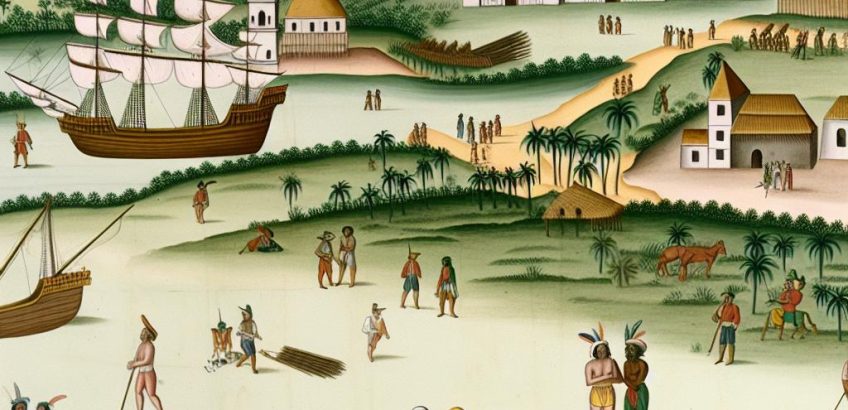
Spanish colonization of Central America
Introduction to Spanish Colonization in Central America
The Spanish colonization of Central America, commencing in the early 16th century, represents a pivotal era that profoundly influenced the region’s cultural and political landscape. The territories now known as Guatemala, El Salvador, Honduras, Nicaragua, Costa Rica, and Panama were home to vibrant indigenous cultures prior to the arrival of the Spanish. With the onset of European exploration and conquest, these societies encountered transformative changes that would set the course of their histories for centuries to come.
Early Exploration and Conquest
In 1502, Christopher Columbus made contact with the eastern coast of Central America during his fourth voyage across the Atlantic. This event marked the beginning of European interest in the region. However, it was not until two decades later, in 1523, that the Spanish undertook substantial endeavors to subjugate and colonize Central America. These efforts were notably spearheaded by Hernán Cortés, whose campaigns expanded from Mexico into the heart of Central American territories. A pivotal figure in this drive for conquest was Pedro de Alvarado, a trusted lieutenant of Cortés, renowned for his decisive conquests across Guatemala.
Alvarado’s expeditions were characterized by strategic alliances and brutal military tactics that subdued numerous indigenous groups, altering the demographic and power dynamics of the region. The ramifications of these conquests were profound, as they paved the way for the establishment of Spanish colonial rule.
Impact on Indigenous Cultures
The indigenous civilizations in Central America, including the formidable Maya and various smaller cultural groups, were dramatically affected by Spanish colonization. One of the most immediate impacts was the drastic decline in indigenous populations, primarily due to the outbreak of diseases like smallpox, to which the native populations had no immunity. Additionally, military confrontations further exacerbated this decline, as many communities resisted Spanish incursion, often at great loss.
The imposition of Spanish culture, language, and religion initiated a slow but steady erosion of indigenous traditions. The Spanish sought to replace native belief systems with Catholicism, often integrating indigenous symbols within the Christian framework to facilitate conversion. As a result, the religious landscape transformed significantly, with Catholicism becoming a central pillar of social and cultural life in the region.
Spanish Colonial Administration
To maintain control over their new territories, the Spanish established various colonial institutions. By the mid-16th century, the Audiencia of Guatemala was inaugurated as the primary administrative authority under the auspices of the Viceroyalty of New Spain. This institution was tasked with governance, legal adjudication, and enforcement of colonial policies across Central America.
The introduction of the encomienda system was another significant aspect of Spanish administration. This system allowed Spanish settlers to claim rights over indigenous labor and tribute, which were used in agricultural production and mining endeavors. While intended to provide for the indigenous people’s conversion and welfare, in practice, the encomienda often led to oppressive relationships and exploitation.
Long-term Effects of Colonization
The legacy of Spanish colonization is deeply etched into the fabric of modern Central American societies. The introduction of Catholicism has endured, with the religion remaining predominant throughout the region. Similarly, the Spanish language has become the lingua franca, underscoring the enduring influence of colonial rule.
Moreover, the colonial economic structures initiated by the Spanish have had lasting repercussions. These structures laid the groundwork for economic systems marked by inequality and disparity, the effects of which are still visible in contemporary Central American societies. Despite independence movements in the 19th century, the entrenched social and economic stratifications established during the colonial era continue to echo today.
For those interested in a more comprehensive examination of Central America’s history and its colonial antecedents, valuable resources can be accessed through Encyclopaedia Britannica and various academic publications available through research institutions.
The history of Spanish colonization in Central America is a complex tapestry of interactions between diverse cultures, significant shifts in power, and profound social changes. These elements have collectively shaped the unique identity of Central America as it is known today, underscoring the lasting impact of colonialism across the region’s history.
